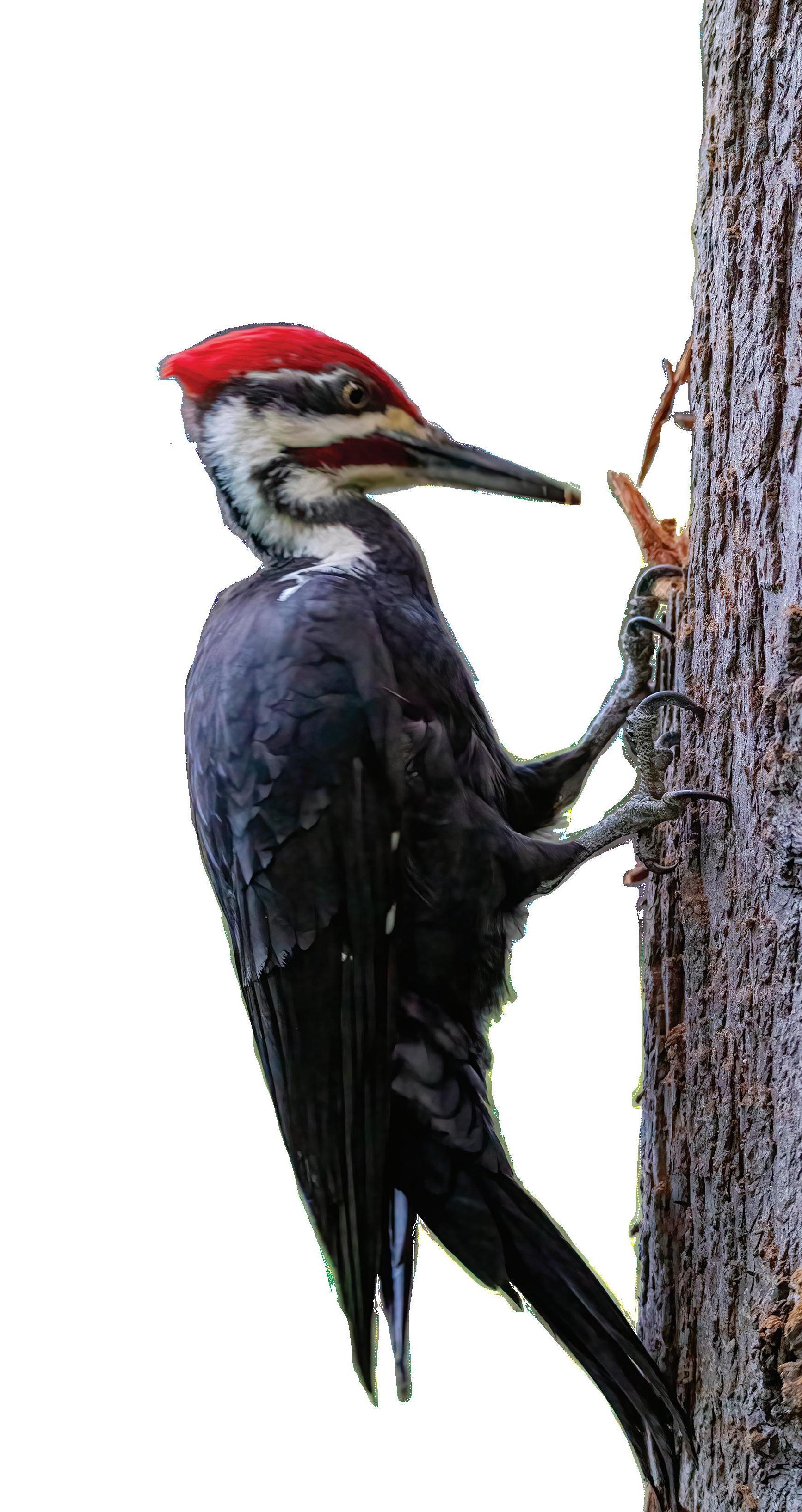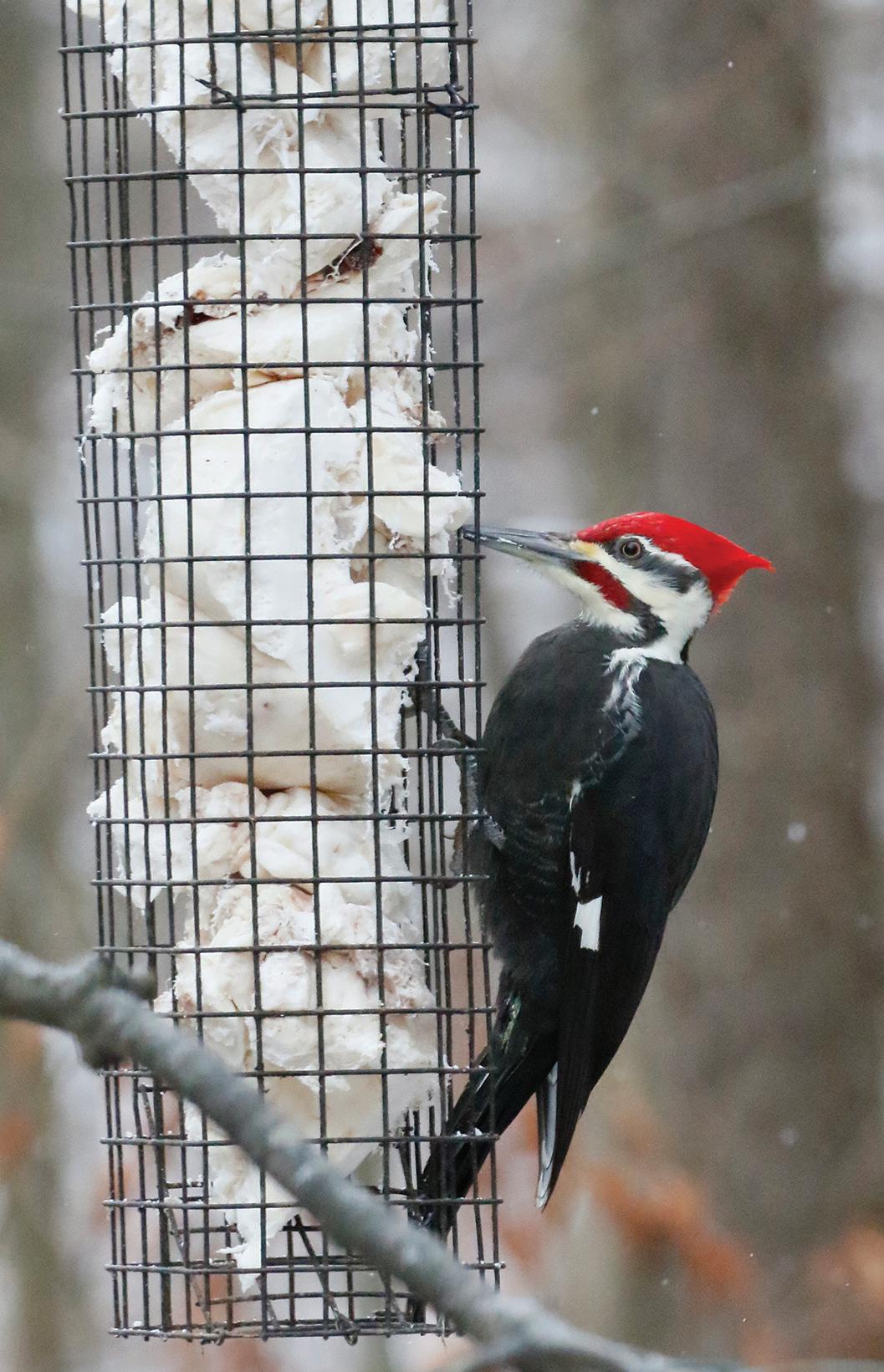
3 minute read
WOODS, WATERS AND WILDLIFE
Attracting ‘Big Bird’
Pileated woodpeckers are a spectacular sight — if you can get them to come around.
STORY AND PHOTOS BY W.H. “CHIP” GROSS
The largest woodpecker in North America lives in the Buckeye State, and for years I tried unsuccessfully to lure one to my home birdfeeders — and, ultimately, within camera range. Crow-sized with a 30-inch wingspan and sporting a large, blood-red crest, the pileated woodpecker is a spectacular bird, but it’s also one of the most wary, secretive, and elusive wild critters in all of Ohio’s forests.
As the photos with this story attest, I eventually achieved my goal of attracting and photographing pileated woodpeckers up close. But I have to give credit where it’s due — I had a little help.
Bird Watcher’s Digest (www.birdwatchersdigest. com) is an outstanding national birding magazine that has been published bimonthly in Marietta, Ohio, by the Thompson family for more than 40 years. In reading the March/April 2020 issue, I came across a short article by birder Tom Coleman of Bloomington, Indiana, titled “My Mega Suet Feeder.” In the story, he described making an oversized suet feeder that attracted pileated woodpeckers. He said he once even had four birds on the feeder at the same time! I was skeptical, but thought I’d give it a try.
Coleman began by taking one-inch wire mesh and shaping it into a square, five inches per side. He wired it together, then added a wire-mesh bottom, leaving the top of the tube open. The length of his feeder was 24 inches. He said that 23 commercial suet cakes filled the feeder, stacked flat one upon another.
To save a few bucks, I tweaked Coleman’s approach. Instead of the commercial suet cakes, I stopped by my local butcher shop and bought beef fat at $1 per pound; it took 10 pounds of the fat to fill my feeder.
I then wired the feeder about six feet off the ground in a tree near the window of my home office and waited. And waited.
The word “pileated” is pronounced PILE-e-ated
meaning “capped,” referring to the bird’s crest.
And waited. For weeks no pileated woodpecker appeared. The smaller, more common woodpeckers frequenting my birdfeeders loved all that beef fat, but they were not what I was after.
I tried that experiment during late winter of 2020 before taking the feeder down in the spring. Undaunted, I hung the feeder again in November of 2020, and guess what? A male pileated arrived about a month later! He’s been a regular visitor ever since, readily posing for photo after photo. He even brought along his mate late last winter. I believe the large feeder made the difference because it provides not only abundant food but a large surface for the pileateds to land on. Pileated woodpeckers are found across the state but are most prevalent in the larger forests of southern and eastern Ohio. A mated pair requires as much 100 acres of mature woodland habitat, so it may take a while for them to find your feeder, as it did with mine. But once they do, they’ll remember your generous offering of suet or beef fat and return often. Pileated woodpeckers were all but extirpated from Ohio by 1900, due to the extensive deforestation that took place as the state was being settled. The good news is that Ohio forests are expanding once again, now covering about a third of the state, which provides new woodpecker habitat. As a result, the pileated population in the Buckeye State is on the increase. You’ll know there are pileated woodpeckers in your area by the large holes they chisel in rotting trees with their stout bill while searching for insects. The holes are generally ovalshaped, measuring as much as a foot wide and 2 feet long, with woodchips scattered at the base of the tree. A pileated woodpecker’s call is also telling — a repeated, very loud and raucous woika, woika, woika that carries long distances.

Ask chip!
Email Chip Gross with your outdoors questions at whchipgross@ gmail.com. Be sure to include “Ask Chip” in the subject of the email. Your question may be answered on www.ohiocoopliving.com! www.ohiocoopliving.com






